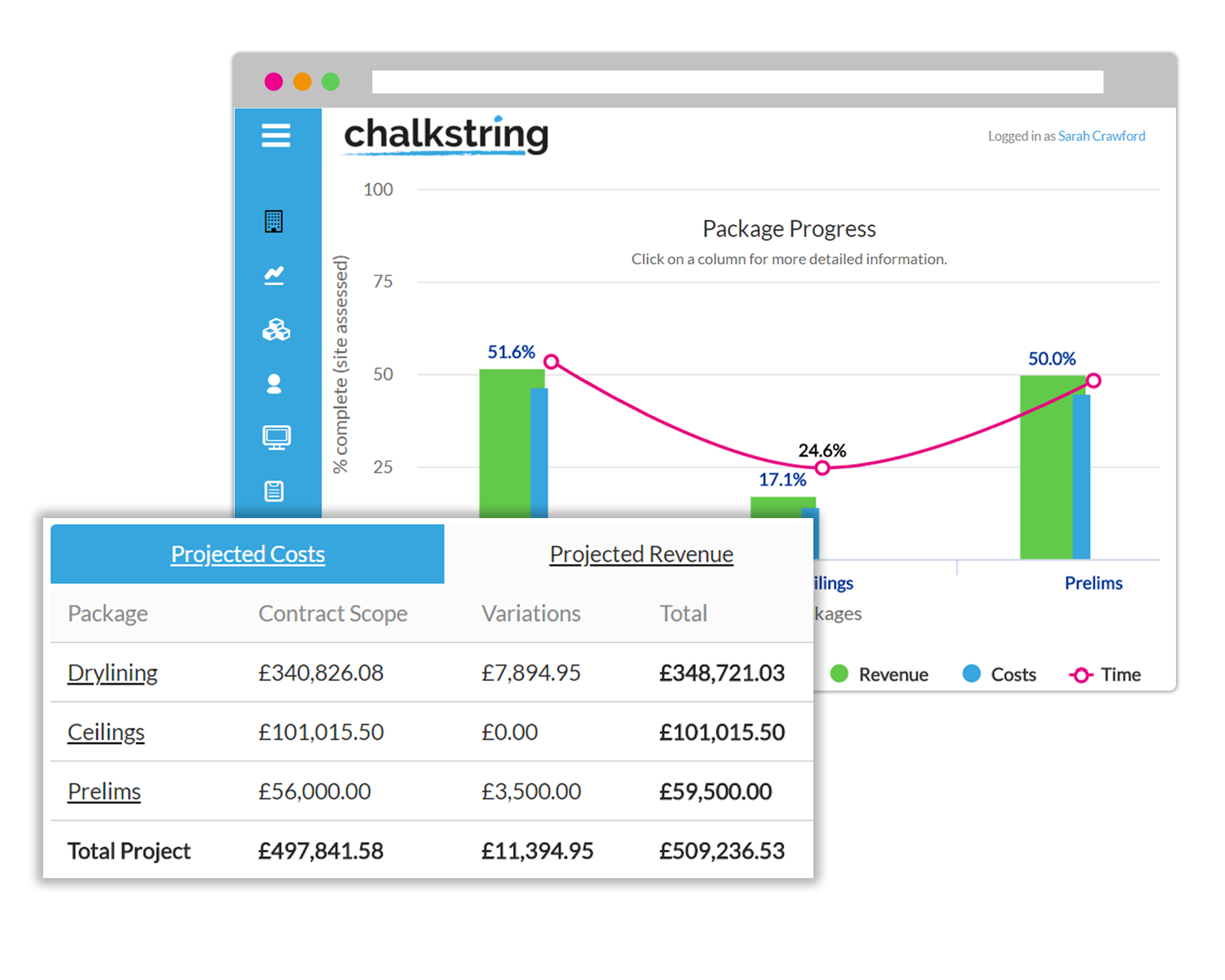Cost and time overruns are familiar to many in the construction industry, and it’s not uncommon for contractors to have a less-than-perfect view of how their contracts are performing against an estimate. Whether bidding for or managing contracts, keeping firm control of costs is an absolute priority as one slip can make a significant difference. Adrian JG Marsh met the creators behind a new cloud-based management tool that could make the difference between profit and loss.
“Surely there’s got to be a better way of doing this,” said Stuart Friend, when he was a fresh, young contracts manager at SCS, the Wakefield-based £20 million family-owned contractor, and grappling with making the numbers stack up and turn in a profit on contracts he was responsible for. Lose control and the losses can climb and impact on the future of any business.
Back in 2014, Stuart thought that in a world where subcontractors’ margins were continually under pressure, having a true picture of how a contract is performing would be a huge benefit.
He explained: “Many businesses have developed their own way of working using spreadsheets and different software. But, back then, there was nothing on the market that pulled it all together.”
So Stuart set about creating his own, outside of the SCS family business. He teamed up with a group of developers who had construction experience and, four years on, they have created Chalkstring, a cost-control software product that gives subcontractors a tool to improve margins, bid more accurately and manage more contracts with the same resources.
Darren Friend, operations director at SCS, saw the benefits of the new software and readily helped to trial the evolving system on a series of contracts. He explained: “To move away from old ways of working took some convincing. But we’ve started to see the benefits as more contracts are estimated and then managed using Chalkstring.
“We’re now able to monitor and manage individual contracts more effectively, and we’ve seen waste decline by ordering materials more efficiently. For example, we now know with more accuracy how many boards we need for each type of contract, whether it’s a school or an apartment block.”
“Once on-site, the software gives us the ability to see reports on the exact financial position of each contract. It also shows progress and committed costs where invoices for materials and subcontract labour have not yet been received,” he added.
Stuart, who is product director at Chalkstring, outlined the software’s capability as a management tool. He said: “Once you’ve decided what to tender, you can very quickly create a cost plan and easily analyse the likely impact of using different materials and changing margins on different elements. This helps you to decide quickly and accurately how to price a tender and win a job if you want it.
“When a job is won, you can then make an informed decision about how to set up a contract, such as whether to go either multi-supplier or single supplier and see what the impact on predicted margin and progress will be. Directors and managers can then interrogate actual, accrued and projected costs and revenues to see the costs-to-complete for each package and monitor predicted margins. This allows contract teams to easily identify packages or areas that are overrunning on estimates made at tender stage.”
Elphick Bros Plastering, in Eastbourne, handles contracts up to £1 million and is using Chalkstring to help the company to grow. Director Kevin Elphick said: “We wanted to increase our capacity to tender and manage contracts more carefully so that we have a tighter handle on costs. Initially, we ran tenders in parallel to ensure that Chalkstring did what it said and it’s definitely faster than hand-balling estimates.
“We were at saturation point with our tender capacity, about 30 a month. Now we can do more, and tinker with bids to take account of different materials, different labour rates or different locations. It’s given us an ability to give more options to potential clients.”
Stuart emphasises that the software offers a new way to handle manual, time-consuming and repetitive tasks, such as value engineering, procurement, and processing payment and labour applications. It is also making it easier to price and manage variations by ensuring they are included in valuations, applications and reports, something that is often missed on-site and can impact on profit margin.
Time will tell whether Chalkstring will follow Sage and become a must-have tool, but the indications are that it’s a step towards taking greater control of costs.


